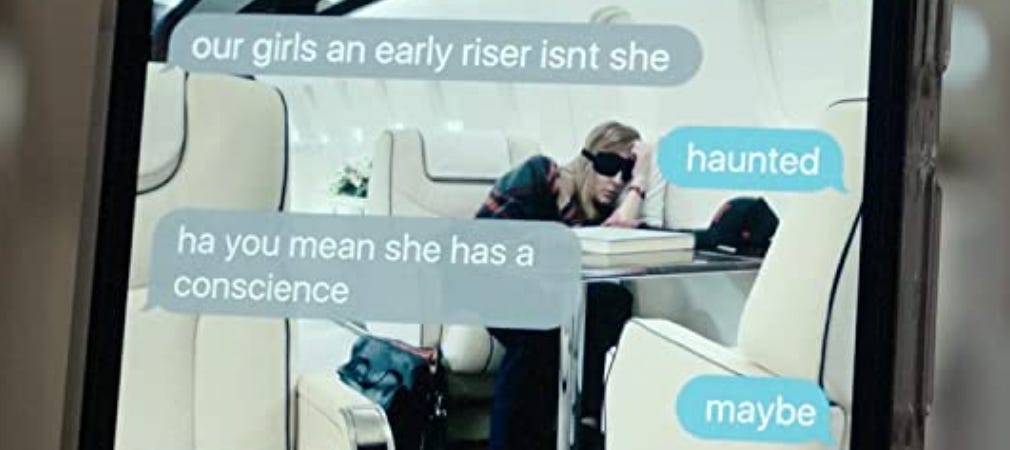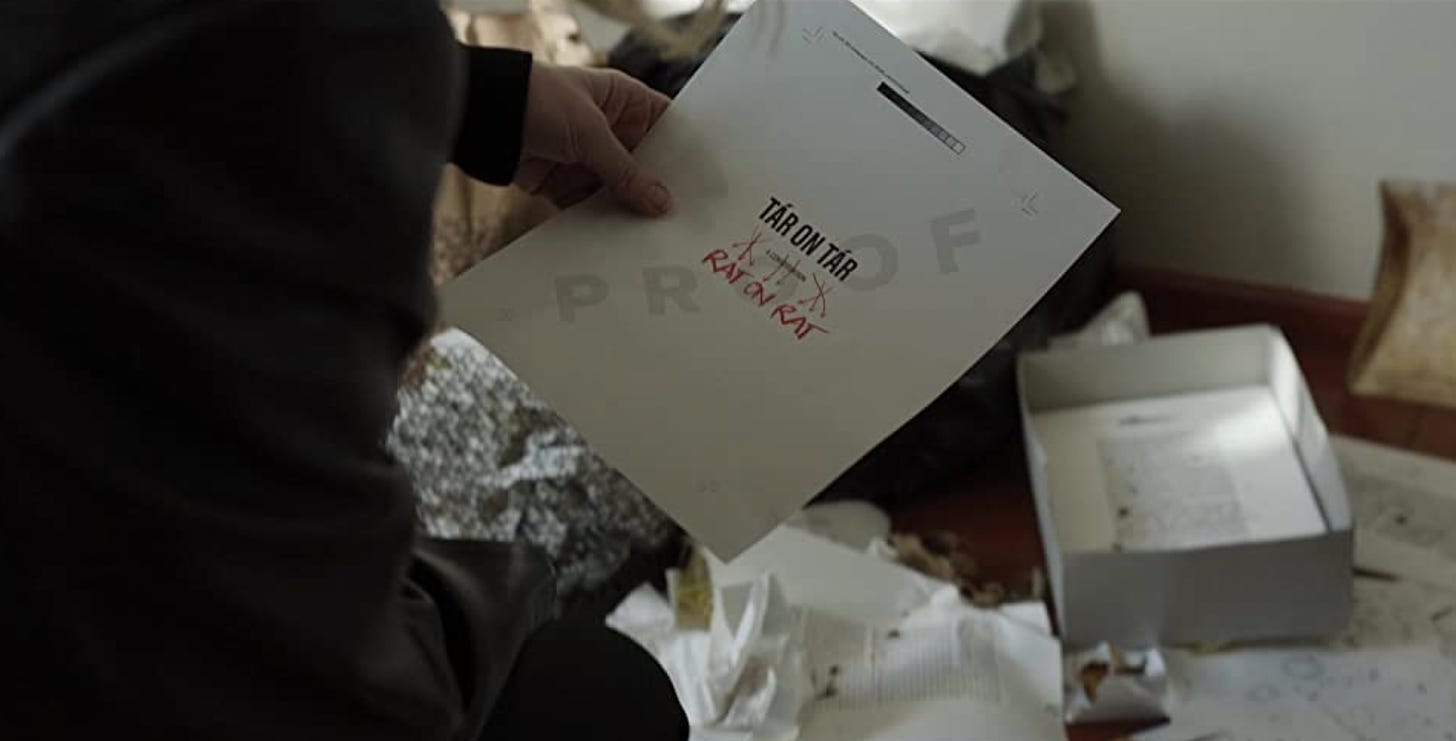There’s been a lot of chatter lately as to the interpretation of the third act of what I’d consider to be the best film so far of this young decade. There’s the camp that feels everything occurring after the encounter with the dog is a dream. There are those who dismiss that as a reductive cop-out. I think it’s something else entirely. Oh, and if you’ve gotten this far without having seen the movie, head on over to Peacock and come back in 2 hours and 37 minutes.
From its opening shot labeling her haunted, once you consider TÁR as a ghost story, it becomes difficult to see it as anything else. Heck, you can even briefly see Krista’s ghost loom over Lydia’s bed as she awakes to her daughter’s nighttime cries. From the tribal drawings to the mysterious screams and ticking, the traces of a spectating specter aren’t just there if you look, they’re unavoidable.
The dream interpretation is understandable. The fall from grace feels sudden, of course. But that’s not because it’s a dream—or a nightmare—rather, it’s a rift in the spiritual fabric that’s held her cankered life together, a rift no ceremonial candle by the doorway can weld back. When the strings are cut, seemingly bitten by the jaws of the beast that heralded her downfall, the puppet show Linda Tarr has so painstaking orchestrated tumbles.
Can it be any coincidence that her final flourishes at the height of her powers occurs during the dying season of autumn, when the leaves are bright just before they fall?
Note the power dynamics on her return to Germany with Olga. Once on the right side of the car when she was traveling with Francesca, we see Lydia now on the left, her position of power supplanted by one whose affections she can’t conjure or cajole. The spell is broken. The pupil who initially seemed to respond to her attention is now, following the incident with the dog (and likely due the protestors and bad press), indifferent to it. And who can blame her? Lydia’s score is riddled with the damned spots of the protégés she betrayed that she can’t seem to scrub out, no matter how many hard trips she takes to the kitchen sink to wash herself clean.
When Lydia visits the flat of her former supplicant, she finds the title page of her memoir, TÁR ON TÁR, crumpled on the floor, strewn amongst other pages bearing the recurring aboriginal scrawl. The title’s letters have been rearranged to read Rat On Rat. Grim, amusing, and appropriate.
This next rearrangement might be a bit of a reach, but hey, that’s what interpretation is, right? If we look at the letters in the name of the decedent, Krista Taylor, they can be rearranged to read Traitor Slay Ki. If we accept ki as an alternate transliteration of chi, the circulating life force of much of Eastern philosophy, the grisly anagram speaks for itself. Lydia, who has betrayed the trust of the less powerful who looked to her, has the stains of her student’s life force on her lips, sapped like so much blood from one in a series of succubine dalliances.
Whether it’s this student moving the metronome or shaping the Play-Doh in Petra’s room, it’s not certain but the implication is everywhere.
“Lydia, when will you be back?” asks Petra in one of their final scenes together. Whether Lydia manages to outrun or make peace with the ghosts that haunt her is anyone’s guess, though judging by the convulsions of conscience at the fishbowl, any sort of peaceful finish line is a long way off. She may not have arrived in hell, but her time in purgatory seems to have begun early. What she does with it is the fascinating question for us to ponder. As Lydia herself puts it, time is the thing
Reply Forward








